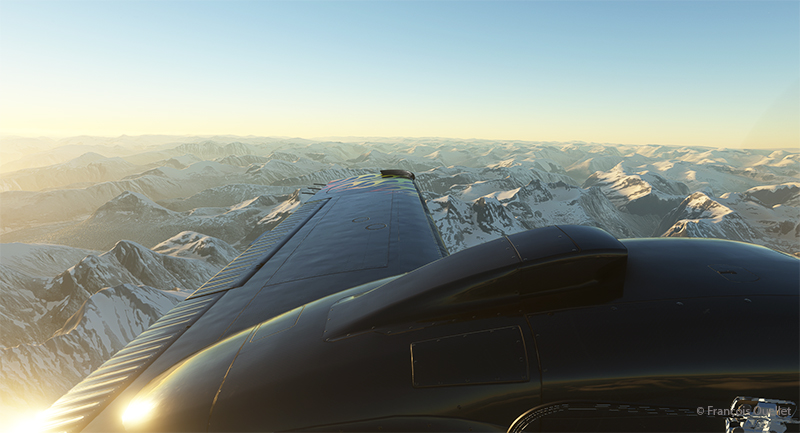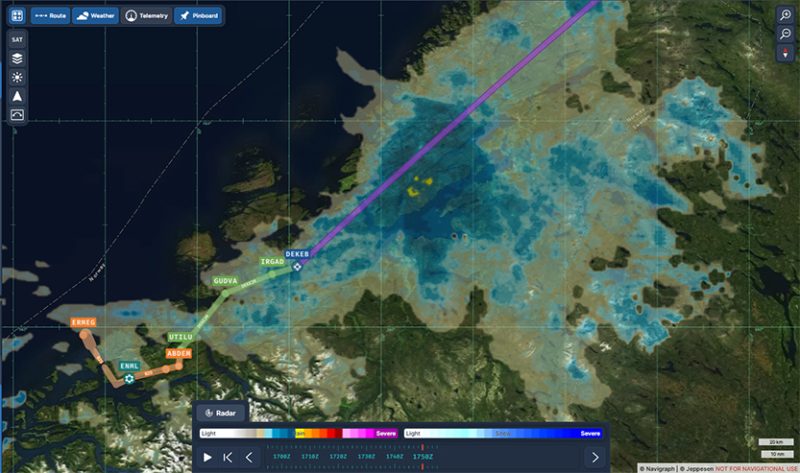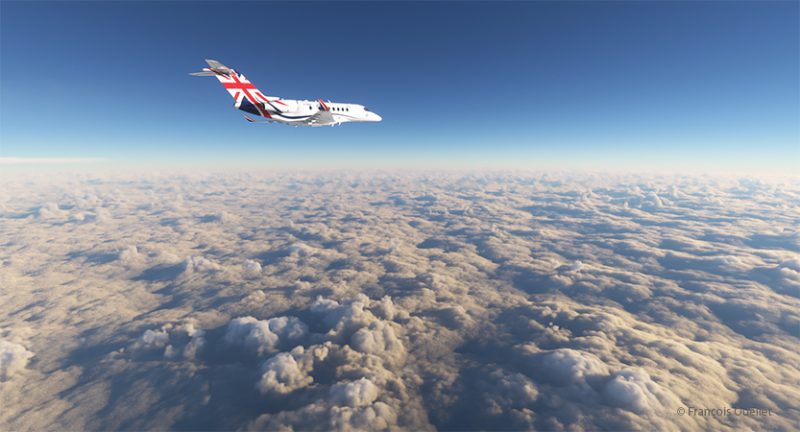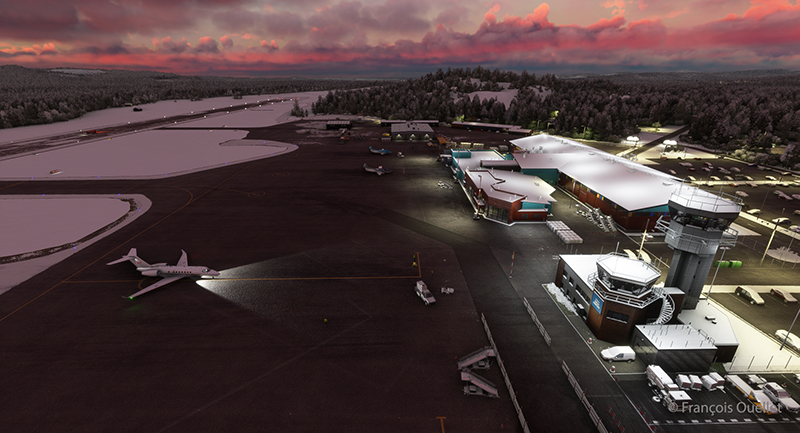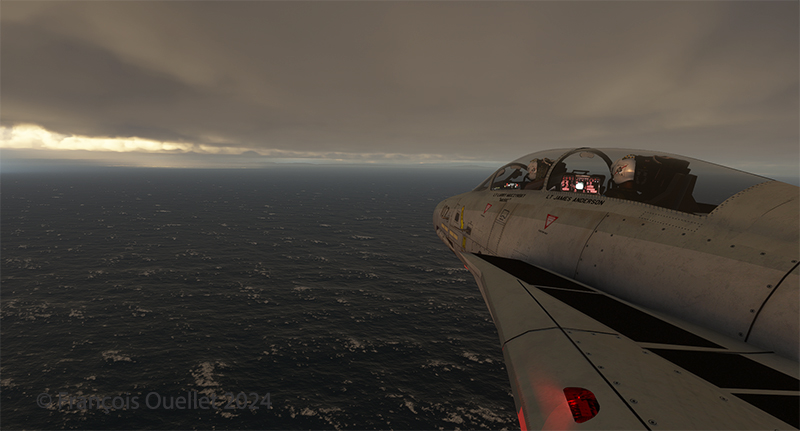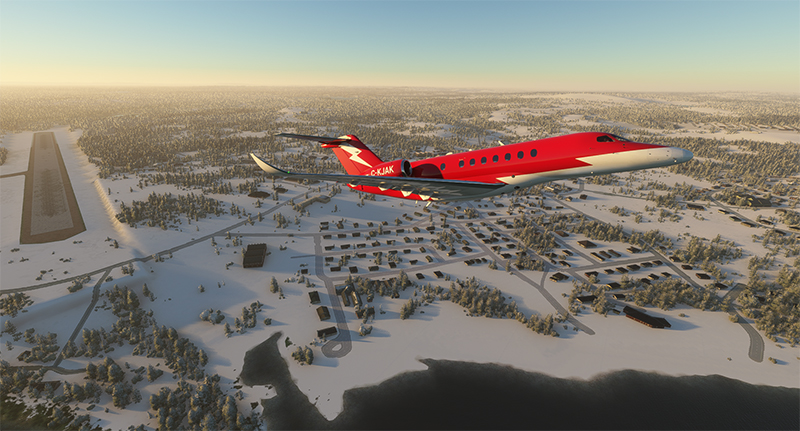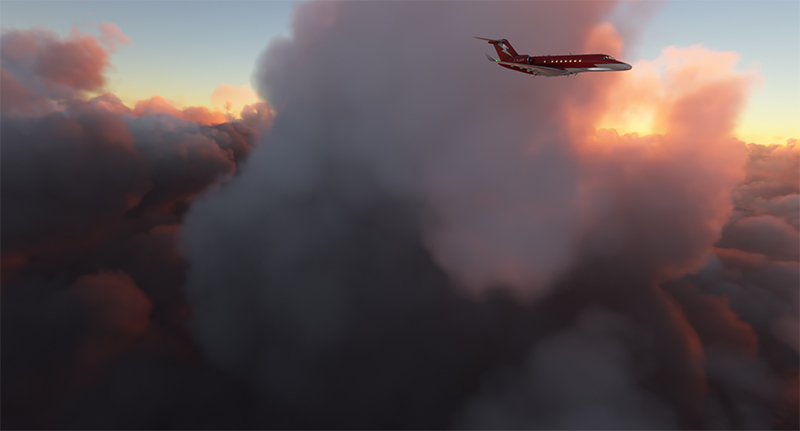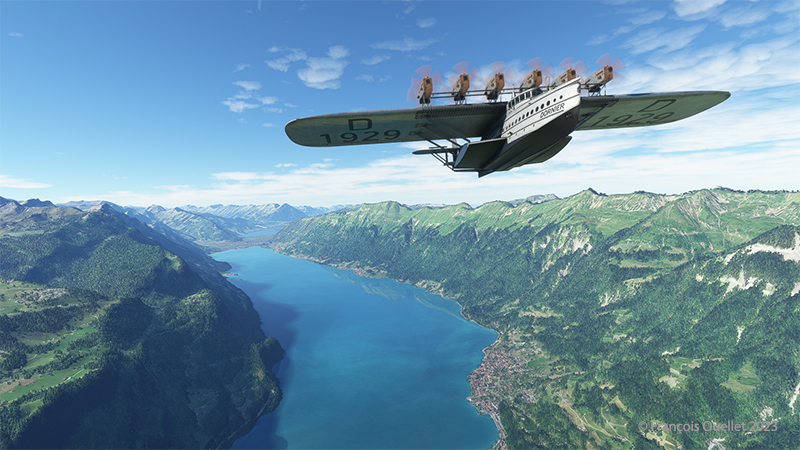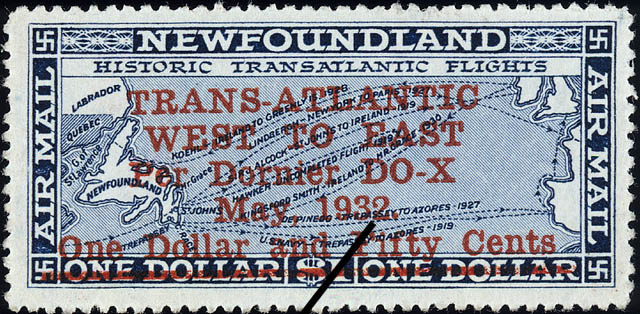
Leg 8 of this round-the-world trip in flight simulation is from Stockholm-Bromma airport in Sweden to Antonov (Hostomel) international airport in Ukraine (UKKM), where the virtual Antonov 225 is based.
The world’s only example of this aircraft was destroyed at the start of the Russian invasion of Ukraine in February 2022. However, no one can prevent a virtual aircraft from surviving (even computer) attacks. Note that the entire purchase price of the virtual aircraft in the Microsoft store is reserved for the eventual reconstruction of the real aircraft.

For the trip, a quick overflight of Belarus will be necessary. A decommissioned, unarmed F-14 Tomcat should do the trick.

The flight will take place at speeds above the sound barrier.

The Navigraph map above shows the planned route. The pink triangle shows the F-14 entering Belarus.

A change of itinerary is in order for a few minutes, with a dive into Belarusian territory. But, as the military say, this flight “never happened”.

We’re obviously not invited to perform a high-speed pass. But it seems to be becoming the norm in this part of the world in recent years, so why not us?
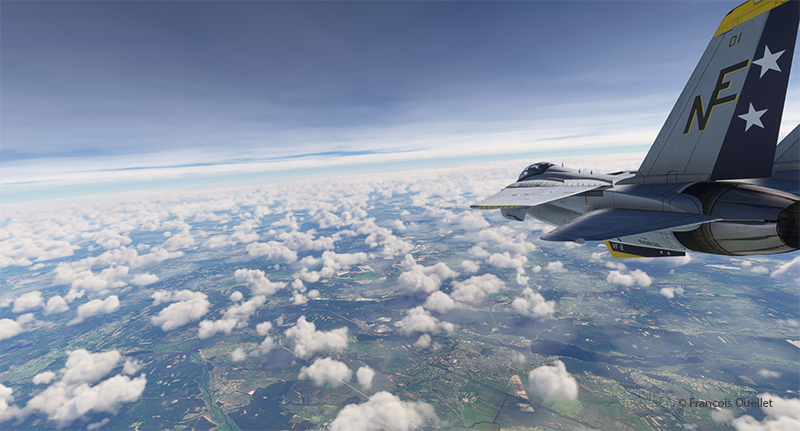
The flight to Antonov International Airport continues at top speed. We’ll soon be there.

Above, the F-14 makes a descent turn for the final approach to Antonov airport, with landing gear down and flaps adjusted. In real life, the runway has been damaged by the Ukrainians themselves to prevent the Russians from easily establishing a beachhead in their country. But we’re in virtual mode, so anything goes.

As we taxi, we pass a few Ukrainian army soldiers greeting the arrival of the foreign pilots.
The virtual Antonov 225 is in its hangar, the very place where it was destroyed at the start of the conflict. I’ll be using this aircraft for the next leg of my round-the-world trip, flying over Crimea, landing in Russia and finally finishing the leg in Poland. We mustn’t leave the virtual Antonov 225 in Russia, as a matter of principle.
Click on the link for more flight simulator flights around the world on my blog.












